A Comparison Between Twitch and Kick
Is Twitch Dying? More Importantly is Kick Going to Replace it as the King of Streaming
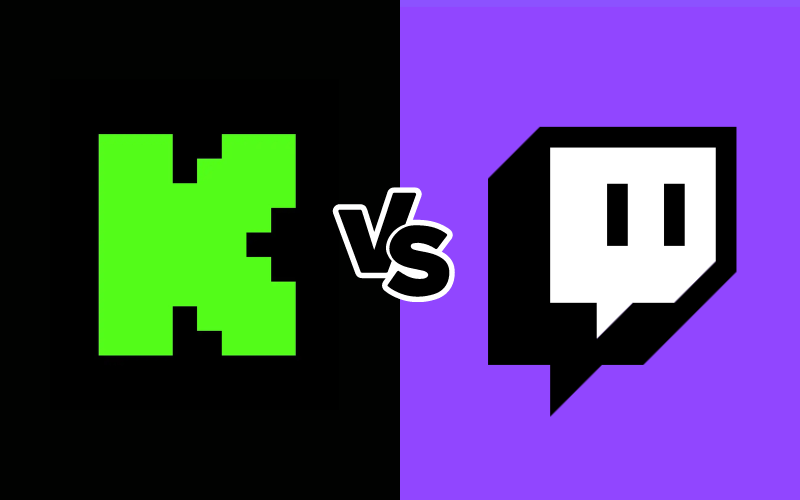
- Twitch has over 140 million monthly active users as of 2024.
- Over 7.30 million people stream on the platform every month.
- About 30 million users use Twitch daily.
- Twitch generated an estimated $2.8 billion in revenue in 2022.
- People spent 23 billion hours consuming content on Twitch in 2023.
These are just a few of the mind-boggling milestones set by Twitch in 2023. Somewhat unfathomably, the lovable purple app continues to grow effortlessly year after year and viciously obliterate any challenger to its throne. When it comes to live-streaming few platforms come close to laying a glove on Twitch and the empire it has created. Time after time we’ve seen humble startups try to gain a foothold in the industry only to buckle against the weight of Twitch’s imperious presence. Tragically, in an industry defined by boundless possibilities and limitless caravans of content, there are only a handful of viable alternatives to Twitch.
True Twitch challengers are a rarity in the industry. Even platforms launched with the backing of well-known mega-corporations have failed—as was the case with the Microsoft-backed Mixer platform which shut down in 2020. So with all that said we have to ask the question: Can anyone truly rival Twitch as the ‘go-to’ live-streaming platform?
Well, today I’ll be making a case for Kick. Kick is the new kid on the block and the latest live-streaming service to go toe to toe with Twitch. Kick’s central claim: “Stream on Kick and Double Your Income” is geared toward creators and influencers disillusioned with Twitch’s obnoxious 50/50 split payment structure. Some major streamers and influencers have already made the switch to Kick because of their “creator-friendly” mindset. Also, while it hasn’t been around for long the early signs are showing that Kick has the potential to become a name-stay brand in the world of live-streaming. That’s why in this article we’ll be taking a comprehensive look at Kick vs Twitch: How are they alike? How do they differ? And, most importantly, which one is best for you? So sit back in your gaming chair chat, and let’s kick off this stream—of opinion!
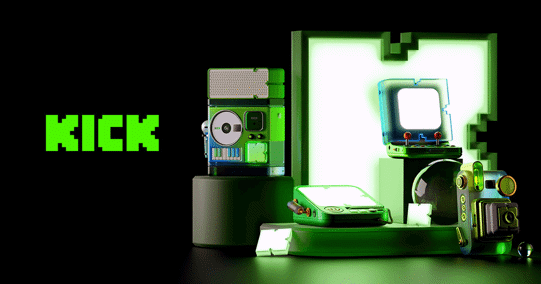
What is Kick?
Very simply, Kick is a live-streaming service that allows users to create content and watch live broadcasts in real time. So just think, Twitch but in Green.
Of course, that’s a reductive statement and there are a couple of key factors that set the platforms apart otherwise I wouldn’t be writing this article.
Nevertheless, Kick does have a lot in common with its bigger and purple-er cousin Twitch. For starters, Kick shares its central premise of letting users stream their own content and watch other creators with Twitch.
Secondly, as is the case with Twitch, Kick features a chat panel that promotes interactivity between creators and fans. On top of this, you also have the option to directly support your favorite streamers through chat donations.
Finally, if you’re new to streaming or you simply can’t make up your mind on what to watch then you’ll want to use Kick’s ‘Browse’ function. ‘Browse’ will assist you by breaking down the plethora of content on display into smaller categories such as Gaming, Politics, or Music.
In the end, Kick is functionally identical to Twitch from a user experience perspective. The main differences between the platforms are moderation, creator payment structures, and company transparency.
Where did Kick come from?
Unfortunately, we know shockingly little about this company’s creation and the people behind it. Even in my research for this article, I was only able to uncover tiny scraps of information about the company’s past. These include the date the platform was launched: on October 18th, 2022, the parent company behind it: Easygo Entertainment Pty Ltd, and the known financial backing of Stake.com—a popular online cryptocurrency casino—CEOs Ed Craven and Bijan Tehrani.
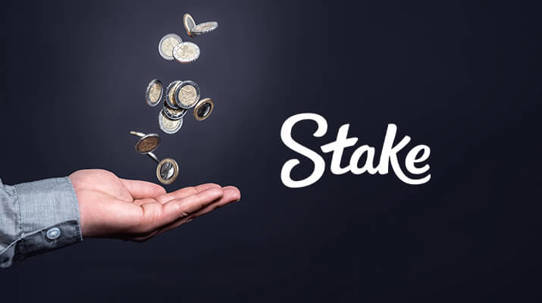
For all the praise and all the flowers I will give Kick later in this article, it does have an insurmountable flaw in its presentation and that’s the lack of transparency.
Everything regarding Kick’s past, present, and future, is shrouded in mystery. And while this won’t affect the average user who’s just on there to consume content, creators might find it to be a harder pill to swallow.
This is because most streamers are entirely dependent on the income they make on their platform of choice. That’s why trust is a huge variable to consider when you’re a content creator on a streaming platform. If your chosen platform were to go bankrupt or to make unexpected changes to its policies or its payment structure that could seriously hurt your bottom line.
In short, not knowing who’s at the helm and what their intentions are can be a major turn-off if you’re a thriving influencer who’s looking to stream exclusively on Kick.
Ultimately, the mystery surrounding Kick’s origins and meteoric rise can create an uneasy atmosphere and a rift in trust between the platform’s owners and moderators and their cherished content creators.
How Kick became so popular?
Kick’s dramatic rise in popularity may be down to a couple of factors but when you really break it down only one of them matters and that is the platform’s payment structure.
I could beat around the bush all day and tell you that Kick has a slick and intuitive UI or that it delivers a more diverse catalog of content but the truth is none of that matters when you’re competing with the behemoth of the streaming industry: Twitch. Kick founders understood this and that’s why they opted for a 95/5 payment split in favor of creators in contrast to Twitch’s controversial 50/50 structure.
With this change alone they captured the attention and admiration of streamers across the globe. Everyone from small-time aspiring creators to household names in the industry took note of this change and began regarding Kick as a serious way to make money. From there, it didn’t take long for streamers to begin changing teams or simply start simulcasting on Kick as well as Twitch to boost their revenue.
Next on the agenda for Kick was to secure the services of some of the biggest creators on the planet. They did this in some cases by tying them down to mouthwatering contracts and other times they simply let their 95/5 payment split do all the talking.
In the short span of around 16 months, Kick has managed to tempt some of the biggest stars in the streaming sphere to make the change from Twitch over to Kick. Below are just a few of the high-profile names who are now streaming on Kick:

xQc
xQc’s arrival on Kick marked a real turning point in the platform’s trajectory and sent the undeniable message that Kick had landed and was here to stay.
From a monetary standpoint, the deal was unprecedented and unlike anything that had come before in the streaming world. In total, Kick offered the eccentric gaming star a contract that would be worth up to 100 million for him to stream—non-exclusively—on their platform for 2 years.
While this can seem like a lot of money you just have to keep in mind the caliber of influencer that xQc is. Statistically, xQc is one of the biggest streamers on the internet, holding the title of top streamed creator on Twitch for three consecutive years, from 2020 to 2022. In 2022 alone he gained a whopping 1.73 million followers with his content being watched for 231 million hours across his fan base.
Today he has 11.9 million followers on Twitch which ranks him as the 5th largest English creator on the platform and the 11th in total. Apart from IRL and reaction content, xQc is also known for his gambling streams. When it comes to Kick xQc has managed to recreate his success in a short span of time with his channel gaining 669K followers in under a year.
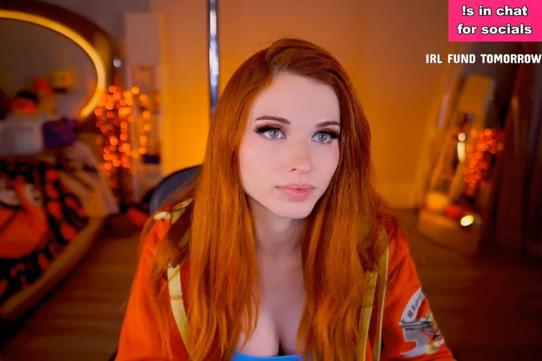
Amouranth
Just days after the xQc announcement Kick revealed its second signing to be none other than the biggest female streamer on Twitch: Amouranth.
Known for her edgy, adult content, Amouranth—Kaitlyn Siragusa—garnered a devoted following of 6.2 million followers on Twitch. She took to Twitter to explain her decision in a personal statement that would rock the streaming world. In her own words, Sirgusa explained “Twitch's 'sin' isn't trying to squeeze creators. Their sin is making a business model that doesn’t succeed except maybe at YouTube scale, but live streaming is a much smaller [Total Addressable Market] than pre-recorded video.” In an obvious nod to Twitch’s scandalous 50/50 payment split announcement, she wrote “Twitch decided to squeeze streamers even tho they will never be able to achieve profitability that way.”
While the details of the contract signed between Amouranth and Kick haven’t been made public it’s rumored to be similar to the one that had been struck with xQc. In an interview with Dexerto Amouranth stressed that the Kick deal had considerably boosted her earnings “like doubled".
Another factor that certainly influenced the deal was Twitch’s censorship guidelines. Amouranth’s channel has always been bogged down and stunted by Twitch’s rigid adult content censorship policies which have got her banned many times on the platform. Making the move to Kick which notoriously started as a more lenient “anything goes” kind of platform was probably a no-brainer for Amouranth. That being said, Kick has since tracked back on its indulgent moderation policies and decided to adopt sterner censorship rules like the ones observed on Twitch. Nonetheless, Amouranth has continued to thrive on Kick by streaming different kinds of content such as 'Just Chatting' and Gaming videos.
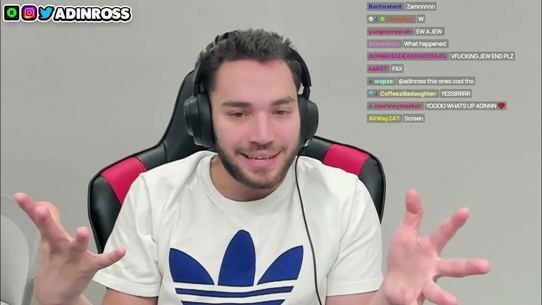
Adin Ross
Another notable example of a renowned Twitch creator jumping ship is Adin Ross, who made a daring switch to Kick, primarily driven by the promise of a more lenient policy environment. Since the implementation of Twitch's stringent regulations led to frequent controversies and bans, Adin sought the greater streaming content freedom offered by Kick, enabling him to better personify his brand without the constant worry of violation.
Adin's move did more than just stir up the streaming community; it also fueled his own brand expansion. Post-switch, his followers multiplied at a meteoric speed, leading to impressive growth. This increase could be attributed to the uniqueness he brought to Kick, with his already-established Twitch fan base bolstering the numbers. Nowadays Adin is at the top of his game with a mind-boggling 1.08 million followers on Kick. In essence, the move appeared to be a win-win for both Adin and Kick, illustrating the potential Kick holds as a promising platform for content creators.
Kick Growth Stats
As a result of their expansive strategy and their hunger to bring over the best and biggest creators to their site, Kick has grown remarkably quickly. Here are a couple of stats that show just how big Kick has become over such a short period:
- 21K to 756K average viewers from 2023 to 2024 (+735K)
- 186 to 2,879 average channels from 2023 to 2024 (+2693)
- 857K Total streamers
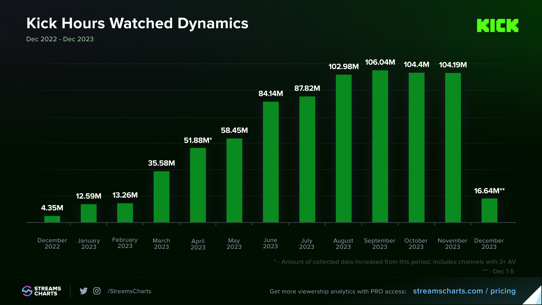
Where did Twitch come from?
On the flip side, we know a great deal about the origins of Twitch and all the important dates in the company's timeline. So let’s start at the beginning and travel back in time to the magical year of 2007.
Twitch was born out of a start-up called Justin.tv that was founded by Justin Kan and Emmett Shear back in 2007. Its gaming category quickly took off, prompting the duo to rebrand Justin.tv into Twitch, a platform focused solely on game streaming in 2011.
Now, here's where it gets interesting: Twitch experienced such exponential growth that by 2014 it was acquired by none other than tech giant Amazon. Under the new Amazon regime, Twitch has grown astronomically and evolved into the dominant live-streaming platform we know and enjoy today.
Twitch vs Kick: A Rivalry Begins
As I just mentioned Twitch launched in 2011, as an American streaming service dedicated primarily to video game live streaming. It also features broadcasts of eSports competitions, creative content, and lately, 'in real life' streams. It's no exaggeration to say that Twitch essentially changed the gaming world, giving gamers a platform to share their passion with a global audience.
Kick, on the other hand, is a newer entrant and carries a broader content scope. Launched in 2022, Kick provides a platform for a wider variety of streams, not limited to video games. Here you'll find live streams of cooking shows, travelogues, educational content, DIY channels, and more, in addition to the gaming streams. The platform speaks to those of you looking for a more varied mishmash of content.
Both platforms, however, share a common goal: to offer a place where creators can share their talents, interests, and passions in real time with an audience as eager to consume the content as they are to create it. Let's venture further into this live-streaming dual and dig into the specifics of Twitch and Kick.
Feature Showdown: Twitch vs Kick
When it comes to assessing the tools and possibilities that Twitch and Kick offer to streamers and audiences alike, it surely calls for a focused, in-depth comparison. Both platforms have carved their niches in the live-streaming universe, each bringing unique features to the table. Your choice between the two will hinge on what appeals more to your streaming needs or viewing preferences. Let's delve into the specifics:
| Features | Twitch | Kick |
|---|---|---|
| Engagement Features | Chat, emotes, bit cheering, and VIP badges to engage viewers | Emojis, GIFs, and interactive polls for more dynamic engagements |
| Monetization Options | Subscriptions, bits, ads, and merchandise sales | In-app purchases, stream donations, VIP memberships, and merchandise sales |
| Streaming Quality | Supports up to 1080p with 60fps | Supports up to 4K resolution with higher bitrate |
| Categories of Content | Comprises mainly of gaming, music, creative, and talk shows | Wide range of content including gaming, entertainment, lifestyle, music, and educational streams |
Pivotal to the live-streaming experience are the interactive features that allow for real-time engagement between the streamer and the audience. Twitch made its name through high levels of interactivity with features such as live chat, Bits for cheering, and the ability to subscribe directly to your favorite broadcasters. Twitch also offers unique features like Raids, which allow streamers to share their audience with other streams, fostering a strong community vibe within the platform.
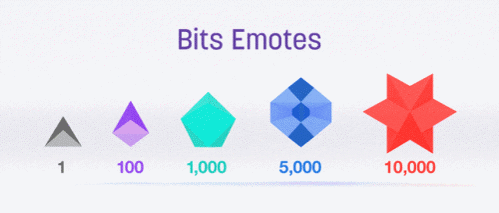
Kick, on the other hand, places a greater emphasis on tight-knit community building. Powered by its signature feature, the Kickback, viewers are encouraged to actively participate in discussions, share their viewpoints, and foster meaningful conversations with the streamer and other viewers. This level of audience encouragement sets Kick apart from most other streaming platforms, Twitch included.
The user interface of a live-streaming platform can significantly sway its user experience and overall appeal. Twitch, in its classic purple hue, offers a streamlined interface that's intuitive and user-friendly. But the real charm lies in its personalizable layout. It allows viewers to switch between multiple broadcast themes and offers a theater mode for a more immersive viewing experience. Twitch's user interface is built with both casual viewers and avid gamers in mind, balancing simplicity with a broad array of customization options.
Kick, while also boasting a clean and easy-to-navigate interface, opts for a minimalist design, which places a greater emphasis on the content itself. With less clutter on the screen, audiences can focus more on the stream, leading to a more engaging and immersive viewer experience. Kick's interface sports a modern aesthetic, devoid of information overload and visual distractions, which can make it more appealing to a certain segment of the audience that values simplicity and elegance.
Revenue Generation: Twitch vs Kick
To begin with, let's first look at how Twitch allows streamers to earn money. The platform primarily offers three methods of earning for streamers: advertisement revenue, subscription fees, and donations by viewers.
Twitch
Ads
When it comes to ad revenue it's pretty simple. Streamers earn through pre-roll and mid-roll ads during their streams (essentially ads that take place before and during the stream).
Subscriptions
Subscription fees are essentially charges that a viewer pays when he subscribes to your channel. Subscribing grants the viewer a couple of nice perks including ad-free viewing and special tags. The issue that some creators have voiced comes with Twitch's 50/50 payment split. Recently, Twitch decided that they would be collecting half of all the money earned from subscription fees and giving the other half to the creators. This decision has been met with backlash from streamers as it has made their work on the site less financially sustainable.
In response to the criticism of their 50/50 payment split, Twitch announced the launch of a Twitch announced a new Partner Plus program that will offer some eligible streamers a 70/30 split, allowing them to keep 70% of subscription revenue. For most streamers on Twitch, however, the standard 50/50 split is still in place.
Donations
Finally, through a feature called "Bits," viewers can donate directly to streamers, with Twitch taking a small percentage of the donation.
Kick
Subscriptions
In Kick's monetization model, the creator earns 95% of the money coming from subscriptions while the other 5% goes to Kick. For obvious reasons, this payment structure is much more appealing to creators than Twitch's 50/50 program. Their radical 95/5 payment split has been the driving force behind Kick's astounding growth and popularity.
Donations
Kick also allows creators to earn through viewer donations. These donations can be in the form of "Gifts" that can be purchased by viewers using real-world money. Once again, Kick proves to be slightly more 'creator-friendly' in this aspect as they allow streamers to receive 100% of viewer donations without any cut from the platform.
Becoming a Partner/Affiliate: Twitch vs Kick
So you're an aspiring streamer who's just created a Twitch/Kick account and you're ready to start making the big bucks and write your name in the record books of the streaming industry. Well, that's not how it works. Not yet anyway. Before you can start making money on either Twitch or Kick you first have to become a recognized affiliate on the platform. Doing so isn't very hard if you follow our quick and easy guide below:
For Kick Affiliate status, you need:
- To stream for more than 5 hours
- 75 or more followers
For Twitch Affiliate status, you need:
- At least 50 followers
- At least 8 hours of live streams
- Streams that took place on at least 7 different days
- An average of 3 viewers
Becoming a Kick Affiliate is noticeably easier than becoming a Twitch affiliate which is why the platform is seen as a haven for up-and-coming creators trying to refine their craft. Ultimately, both platforms demand that you join the affiliate program before you can start earning money from subscriptions.
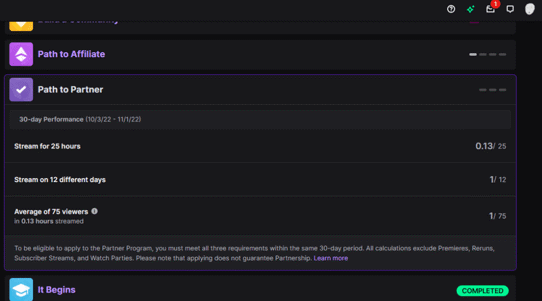
One level-up from Affiliate status is the coveted Partner status on Twitch and Verified status on Kick.
For Kick Verified status, you need:
- To have streamed for 30 hours in the past 30 days
- To have streamed on 12 unique days in the past 30 days
- A minimum average of 75 live concurrent viewers in the past 30 days
- 300 unique chatters in the past 30 days
- A minimum of 20 active subscribers in the past 30 days
For Twitch Partner status, you need:
- To stream for 25 hours
- To stream on 12 different days
- An average of 75 viewers
Creator Friendly: Twitch vs Kick
To all the creators, streamers, and influencers out there, this next part is for you. We know you want to find a platform that's reliable yet not afraid to innovate and evolve with the times. We know how important it is to feel that your channel is safe and won't be banned out of existence seemingly at random. And, finally, we know that in the end, you're trying to reach the largest audience possible and make a reliable income. So, with all that in mind, let's break down the Kick vs Twitch debate through the creator's lens and find out which one is better suited for your specific channel.
On one side, Twitch, being a live-streaming giant, might be just what you need. Twitch offers a diverse streamer dashboard with multiple features and controls, allowing you to manage and personalize your streams effortlessly. It also has the significant advantage in viewer numbers, meaning more potential followers for you. Then there's the Partner Program, which provides prolific streamers with revenue opportunities, bonus features, and additional support. The one major downside of committing to Twitch is the 50/50 payment split. Essentially, Twitch takes a 50% cut of all the money made through your followers' subscription fees. This makes earning a reliable income through streaming even more challenging especially if you're just starting out in the business.
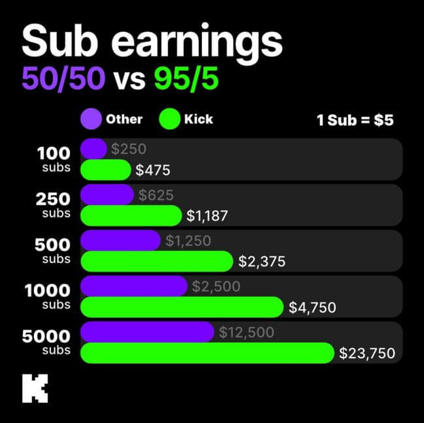
On the other side, you have the rookie, the new kid on the block: Kick. Classed as the underdog in the field of live streaming, Kick offers certain unique benefits. For one, the competition is less fierce on Kick, which could make it easier for newer streamers to get noticed. Secondly, Kick's community content guidelines are notably less stringent than Twitch's, allowing for more experimentation and a wider array of stream-able content. And finally, probably the main difference and the most attractive part of Kick is the platform's 95/5 payment structure. Unlike Twitch, Kick allows the creator to keep most of the money earned through subscription fees with only a 5% cut going to the platform. Ultimately, this can make it much easier to earn consistent money and grow your channel by reinvesting the winnings.
In the end, the choice between Twitch and Kick lies with you, the streamer. Your decision should hinge on what you value most in a platform - is it about reaching a larger viewer count, or standing out with less competition and earning more? Do you prefer a feature-rich interface or one that's more streamlined? Consider these factors carefully, and you're sure to find your streaming paradise. But keep in mind that you always have the option to stream on BOTH platforms and earn through two different streams of revenue.
The Audience Perspective: Twitch vs Kick
From a personal standpoint, this is the big one for me. While I do care about creators getting justly paid and I care about the history and ownership of the platforms the main thing I do when I go on one of these sites is stream videos. So, what is that experience like on Kick and how does it compare with the tried and true Twitch formula?
From a viewer's standpoint, both Twitch and Kick offer quite a distinct experience. On Twitch, audience engagement is a key feature. The platform's built-in chat box, which remains active during live streams, allows viewers to interact with each other as well as the streamer in real-time. This encourages a sense of community, making it easier for users to forge connections. However, the platform’s user interface, replete with emotes and chat commands, might seem complex to the novice user, becoming a barrier to total engagement.
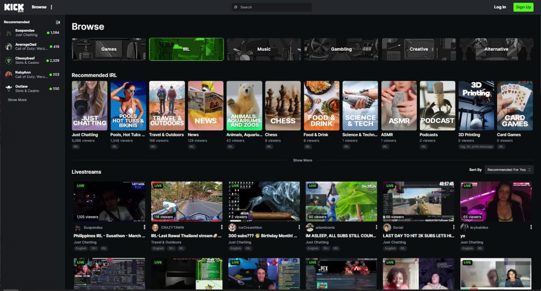
Kick, on the other hand, takes a streamlined approach to viewer engagement. Its stripped-down interface makes for an easy-to-comprehend viewing experience, especially for users who are new to the live-streaming community. However, this simplicity can be a double-edged sword. On one hand, viewers can focus more on the content being streamed without the distractions often associated with Twitch. On the other hand, Kick lacks the community engagement features that make Twitch so appealing to many viewers, potentially leaving them feeling disconnected.
Gaming Focus: Twitch vs Kick
So, you're wondering where your gaming viewing experience will be better, on Twitch or Kick? Both platforms have their pros. Take Twitch, for instance. Being the frontrunner in the live-streaming scene, it is home to a humungous gaming community and hosts a multitude of professional esports events. As a viewer, you get access to a rich variety of content, from chatting streamers playing indie RPGs to the high-octane tournaments of Fortnite or League of Legends. It feels just like walking into a vibrant digital stadium, complete with cheer emotes replacing roars.
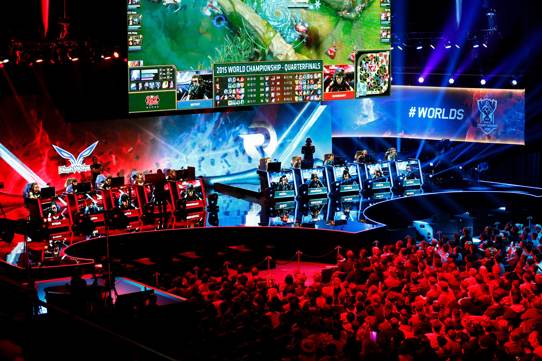
Kick, on the other hand, has made significant strides in a short span. It stands out with its unique features like AI-driven content recommendations specifically tailored for you based on your viewing habits. Smaller, indie streamers have a higher chance of being discovered on Kick thanks to less saturation. And yes, those incessant ads that interrupt your Twitch viewing? Much less frequent on Kick, allowing for a more seamless gaming viewing experience.
So ultimately, the choice boils down to what you seek - if a bustling gaming community and big-ticket esports events thrill you, Twitch could be your winner. However, if personalized recommendations, increased visibility for indie games, and fewer disruptions matter more to you, Kick might be your vessel to an enjoyable gaming content voyage. Remember, the best platform is one that caters to your preferences the most.
Non-Gaming Content: Twitch vs Kick
When delving into the catalogs of both platforms, let's first take a look at Twitch. While Twitch initially gained its fame as a platform centered around gaming content, it has broadened its horizons significantly over time. Today, Twitch provides a platform for a variety of live-streamed content, including music, art, cooking, and even chat shows. The 'Just Chatting' category is among the fastest-growing, indicating Twitch's success in branching out beyond its gaming roots.
Moving over to Kick, this platform also presents a rich and diverse range of non-gaming content. Originally positioning itself as a cross between live-streaming and social media, Kick has a unique appeal for influencers and creators wanting to engage with fans on a deeper level. From beauty tutorials to fitness classes, tech reviews to cooking demos, Kick offers versatility for streamers to create almost any content that their audience will love.

In essence, both Twitch and Kick have successfully expanded their content offerings beyond gaming. While Twitch might still have a slightly larger audience due to its longer history and association with the gaming world, Kick is proving its mettle with its social media-integrated approach and broader range of categories. Therefore, the decision on which platform has the most diverse catalog may not be clear-cut and could essentially boil down to personal preference based on your preference.
The Verdict: Which Platform is right for you - Twitch or Kick?
In the world of live streaming, Twitch and Kick stand as fierce competitors, each boasting features that cater to different types of users. Offering real-time interaction, advanced user interfaces, and mobile experiences, both platforms share a common goal: to deliver high-quality streaming content to their audiences.
However, while Twitch has a stronghold in the gaming community, Kick appeals more to non-gaming content creators, making it a hub for music and creative streams. In terms of revenue generation, Twitch offers an ad-based model and partnership programs. On one hand, Twitch's far superior viewer numbers provide the possibility to reach larger audiences and earn more followers. But when you look at the bigger picture you'll notice that Twitch squeezes new creators by taking 50% of their subscription earnings. On the flip side, Kick adopts a friendlier approach that sees the creator take home 95% of the money earned through subscriptions.
The user experience on both platforms is a mixed bag of similarities and disparities. Streamers often have to choose a platform based not only on the content they produce but also on the demographic they wish to reach - Twitch has a larger global reach, while Kick has gained popularity in specific regions.
At the end of the day, both Twitch and Kick, despite their differences, contribute significantly to the live streaming ecosystem. The real winners here are us, the viewers, as we get more options than ever to consume the content that aligns with our tastes. After all, it's not about which platform takes the throne, but rather, which platform serves up the best experience for the creators and consumers of live-streaming content.

